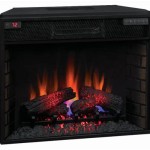Fireplace Glass Doors Installation: A Comprehensive Guide
Fireplace glass doors are an investment that enhances the aesthetic appeal, safety, and energy efficiency of a fireplace. They serve as a barrier, preventing drafts, reducing heat loss up the chimney when the fireplace is not in use, and containing sparks and embers within the firebox. Installing these doors requires careful measurement, selection of the appropriate model, and precise fitting to ensure optimal performance and safety.
This article provides a detailed guide to fireplace glass doors installation, covering the essential steps, considerations, and potential challenges involved in the process. It emphasizes accuracy, safety, and adherence to manufacturer instructions to achieve a successful and long-lasting installation.
Measuring Your Fireplace Opening for Accurate Door Selection
Accurate measurement is the cornerstone of a successful fireplace glass door installation. Inaccurate measurements can lead to the selection of doors that are either too large or too small, rendering them unusable or requiring costly modifications to the fireplace opening. The following steps outline the process of measuring your fireplace accurately:
1. Preparation: Before taking any measurements, ensure the fireplace is cool and free of ashes and debris. Gather the necessary tools, including a measuring tape (preferably a steel tape measure for accuracy), a notepad, and a pen or pencil. A level can also be helpful for verifying the squareness of the opening.
2. Measuring the Width: Measure the width of the fireplace opening at three points: the top, the middle, and the bottom. Use the narrowest of these measurements as the 'width' dimension for ordering your doors. This ensures the doors will fit properly even if the opening is slightly irregular.
3. Measuring the Height: Measure the height of the fireplace opening, again at three points: the left side, the middle, and the right side. Use the smallest of these measurements as the 'height' dimension. This will ensure the doors don't bind against the top of the opening.
4. Checking for Squareness: Use a level to check if the sides and top of the fireplace opening are truly square. If the opening is significantly out of square, it might be necessary to consult with a professional installer or consider custom-made doors. An out-of-square opening can create gaps around the doors, compromising their efficiency and appearance.
5. Measuring the Depth: Measure the depth of the firebox, from the front opening to the back wall. This measurement is important when choosing certain door styles, especially those with full or partial insets. This will determine whether the doors will sit flush with the fireplace face or extend into the firebox.
6. Recording Measurements: Clearly record all measurements, including the width, height, and depth, noting which measurement was taken at which point. Double-check all measurements for accuracy before proceeding to select your doors. Providing these accurate measurements to the door supplier will help them guide you toward the appropriate model.
7. Considering the Fireplace Type: Note whether your fireplace is masonry or prefabricated (zero-clearance). Masonry fireplaces typically have more flexible installation options, while prefabricated fireplaces often require specific door models designed for their particular make and model. Failure to select the correct type can be a significant safety hazard.
By following these steps carefully, you can obtain accurate measurements that will ensure a proper fit for your new fireplace glass doors, maximizing their performance and aesthetic appeal.
Selecting the Right Type of Fireplace Glass Doors
Choosing the right type of fireplace glass door is crucial for ensuring both functionality and visual appeal. Several factors should be considered when making your selection, including the fireplace type, the desired aesthetic, the level of energy efficiency required, and the budget.
1. Overlay vs. Inside Fit Doors: Overlay doors mount to the outside face of the fireplace, covering the entire opening. They are generally easier to install and can often accommodate slightly irregular openings. Inside fit doors, also known as flush mount doors, are designed to fit inside the fireplace opening, creating a cleaner, more integrated look. These require more precise measurements as they fit within the existing firebox.
2. Bi-Fold vs. Cabinet Style Doors: Bi-fold doors consist of two panels that fold inward, allowing easy access to the fire. They are a popular choice for their convenience. Cabinet style doors, on the other hand, swing open like traditional cabinet doors. They often offer a wider viewing area when open but may require more clearance in front of the fireplace. The choice between these styles depends on personal preference and the available space around the fireplace.
3. Single-Panel vs. Multi-Panel Doors: Single-panel doors offer an unobstructed view of the fire but may be heavier and more difficult to operate. Multi-panel doors, typically bi-fold or cabinet style, distribute the weight and offer more flexible access to the firebox. The number of panels also affects the overall aesthetic of the fireplace.
4. Door Frame Material and Finish: Fireplace glass door frames are commonly made of steel, aluminum, or cast iron. Steel is durable and affordable, while aluminum is lightweight and resistant to rust. Cast iron offers a classic, heavy-duty look and excellent heat retention. The finish options are diverse, ranging from black and bronze to brushed nickel and polished brass. The finish should complement the existing decor of the room.
5. Glass Type: The type of glass used in fireplace doors is crucial for safety and performance. Tempered glass is heat-resistant and shatterproof, making it the standard choice for fireplace doors. Ceramic glass offers even greater heat resistance and is often used in high-temperature applications. Tinted glass can reduce glare and enhance the appearance of the fire.
6. Air Intake Options: Some fireplace glass doors come with adjustable air intakes, allowing you to control the amount of air that enters the firebox. This can improve combustion efficiency and reduce smoke. Consider whether this feature is important to you, especially if you experience issues with draft or excessive smoke.
7. UL Listing: Ensure that the fireplace glass doors you choose are UL listed (Underwriters Laboratories). This certification indicates that the doors have been tested and meet safety standards for fire resistance and performance.
8. Custom vs. Stock Doors: Stock doors are pre-made in standard sizes and are generally more affordable. Custom doors are made to order, allowing you to specify the exact dimensions, style, and features. Custom doors are often necessary for unusual fireplace openings or to achieve a specific aesthetic.
By carefully considering these factors, you can select the fireplace glass doors that best suit your needs, enhancing the safety, efficiency, and beauty of your fireplace.
Step-by-Step Fireplace Glass Doors Installation Process
Installing fireplace glass doors is a manageable DIY project for those with basic handyman skills. However, it requires careful attention to detail and adherence to safety precautions. The following steps outline the installation process:
1. Preparation: Before starting, gather all the necessary tools and materials. This includes the fireplace glass doors kit, a drill with various drill bits (including masonry bits if necessary), a screwdriver, a level, a measuring tape, safety glasses, gloves, and a dust mask. Lay down a drop cloth to protect the surrounding floor and furniture.
2. Inspect the Fireplace Opening: Ensure that the fireplace opening is clean, level, and free of any obstructions. Remove any loose bricks or mortar. If the opening is uneven, you may need to shim the doors to ensure a proper fit.
3. Assemble the Door Frame (If Required): Some fireplace glass doors come partially disassembled and require some assembly before installation. Follow the manufacturer's instructions carefully to assemble the door frame correctly. Ensure all screws and connections are tight.
4. Position the Door Frame: Carefully position the door frame into the fireplace opening. For overlay doors, center the frame over the opening, ensuring that it is flush against the fireplace face. For inside fit doors, carefully slide the frame into the opening, ensuring that it fits snugly.
5. Level the Door Frame: Use a level to ensure that the door frame is perfectly level both horizontally and vertically. If necessary, use shims to adjust the frame until it is level. Shimming is crucial for proper door operation and a professional appearance.
6. Secure the Door Frame: Secure the door frame to the fireplace using the provided hardware. The specific method of attachment will vary depending on the type of fireplace and the door model. For masonry fireplaces, you may need to drill pilot holes and use masonry screws or anchors. For prefabricated fireplaces, follow the manufacturer's instructions for attaching the doors to the fireplace surround. Ensure all screws are tightened securely, but avoid over-tightening, which could damage the frame or the fireplace.
7. Install the Glass Doors: Once the door frame is securely attached, install the glass doors according to the manufacturer's instructions. This typically involves attaching the doors to hinges on the frame. Ensure that the doors swing freely and close properly.
8. Install Handles and Latches: Install the handles and latches according to the manufacturer's instructions. Ensure that the latches engage securely to keep the doors closed when desired.
9. Test the Doors: Open and close the doors several times to ensure they operate smoothly and without binding. Check for any gaps around the edges of the doors. If you find any gaps, you may need to adjust the shims or the door hinges.
10. Final Inspection: Perform a final inspection of the installation to ensure that everything is properly installed and secure. Clean the glass doors with a glass cleaner designed for fireplace doors. Remove any debris or tools from the area.
11. First Fire (Observation): After installation, it is recommended to have small controlled fire to observe how the doors operate under heat. Check for any unusual noises, warping, or escaping smoke. Consult with a professional if any issues arise. Follow all safety precautions when operating the fireplace with the new doors installed.
By following these steps carefully and adhering to the manufacturer's instructions, you can successfully install fireplace glass doors and enjoy the benefits of a safer, more efficient, and more attractive fireplace.

Fireplace Glass Doors Vs Screens Full Service Chimney

Fireplace Glass Doors Vs Screens Full Service Chimney

Why Should I Get A Glass Fireplace Door Installed On My

Why You Need Glass Doors On Your Fireplace

Standard Size Masonry Fireplace Doors Fixed Frame

Fireplace Glass Doors Vs Screens Full Service Chimney

Everything You Need To Know About Fireplace Glass Door Replacement Demers

Fireplace Glass Doors What You Need To Know Elegant Fireside

Glass Fireplace Doors Pro Tips On How To Install Them

Glass Fireplace Doors
Related Posts








